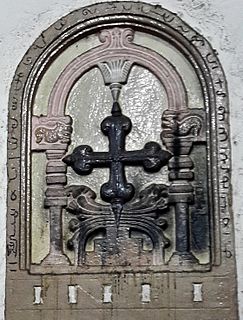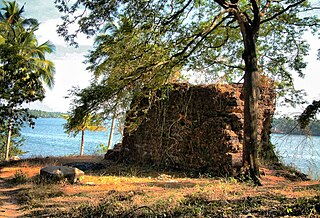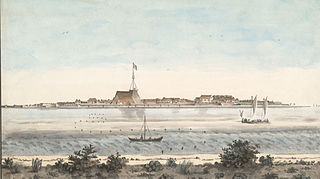 W
WThe Second Portuguese India Armada was assembled in 1500 on the order of King Manuel I of Portugal and placed under the command of Pedro Álvares Cabral. Cabral's armada famously discovered Brazil for the Portuguese crown along the way. By and large, the Second Armada's diplomatic mission to India failed, and provoked the opening of hostilities between the Kingdom of Portugal and the feudal city-state of Calicut. Nonetheless, it managed to establish a factory in the nearby Kingdom of Cochin, the first Portuguese factory in Asia.
 W
WThe Seventh India Armada was assembled in 1505 on the order of King Manuel I of Portugal and placed under the command of D. Francisco de Almeida, the first Portuguese Viceroy of the Indies. The 7th Armada set out to secure the dominance of the Portuguese navy over the Indian Ocean by establishing a series of coastal fortresses at critical points – Sofala, Kilwa, Anjediva, Cannanore – and reducing cities perceived to be local threats.
 W
WLopo Soares de Albergaria was the third Governor of Portuguese India, having reached India in 1515 to supersede governor Afonso de Albuquerque.
 W
WAfonso de Albuquerque, Duke of Goa was a Portuguese general, admiral, and statesman. He served as Governor of Portuguese India from 1509 to 1515, during which he expanded Portuguese influence across the Indian Ocean and built a reputation as a fierce and skilled military commander.
 W
WDom Francisco de Almeida, also known as the Great Dom Francisco, was a Portuguese nobleman, soldier and explorer. He distinguished himself as a counsellor to King John II of Portugal and later in the wars against the Moors and in the conquest of Granada in 1492. In 1505 he was appointed as the first governor and viceroy of the Portuguese State of India. Almeida is credited with establishing Portuguese hegemony in the Indian Ocean, with his victory at the naval Battle of Diu in 1509. Before Almeida could return to Portugal, he lost his life in a conflict with indigenous people at the Cape of Good Hope in 1510. His only son Lourenço de Almeida was previously killed in the Battle of Chaul.
 W
WDuarte Barbosa was a Portuguese writer and officer from Portuguese India. He was a scrivener in a factory in Cannanore, and an interpreter of the local language, Malayalam. Barbosa wrote the Book of Duarte Barbosa c. 1516, making it one of the earliest examples of Portuguese travel literature. In 1519, Barbosa embarked on the first expedition to circumnavigate the world, led by his brother-in-law Ferdinand Magellan. He died in 1521 at the Battle of Mactan on Cebu Island in the Philippines.
 W
WThe Battle of Chaul was a naval battle between the Portuguese and an Egyptian Mamluk fleet in 1508 in the harbour of Chaul in India. The battle ended in a Mamluk victory. It followed the Siege of Cannanore in which a Portuguese garrison successfully resisted an attack by Southern Indian rulers. This was the first Portuguese defeat at sea in the Indian Ocean.
 W
WPedro Álvares Cabral was a Portuguese nobleman, military commander, navigator and explorer regarded as the European discoverer of Brazil. In 1500 Cabral conducted the first substantial exploration of the northeast coast of South America and claimed it for Portugal. While details of Cabral's early life remain unclear, it is known that he came from a minor noble family and received a good education. He was appointed to head an expedition to India in 1500, following Vasco da Gama's newly-opened route around Africa. The undertaking had the aim of returning with valuable spices and of establishing trade relations in India—bypassing the monopoly on the spice trade then in the hands of Arab, Turkish and Italian merchants. Although the previous expedition of Vasco da Gama to India, on its sea route, had recorded signs of land west of the southern Atlantic Ocean, Cabral led the first known expedition to have touched four continents: Europe, Africa, America, and Asia.
 W
WThe Casa da Índia was a Portuguese state-run commercial organization founded during the Age of Discovery, charged with the regulation of international trade and the administration of the Portuguese Empire's territories, colonies, and factories across India, Africa, and the rest of Asia. Central to the Casa da Índia's objectives was the establishment and protection of a Portuguese mare clausum in the Atlantic Ocean, Indian Ocean, Arabian sea, and the Indies. It was founded by King Manuel I of Portugal in 1500 to direct Portugal's monopoly of the spice trade and to manage royal policy for Portuguese India. Following 1503, it absorbed the Casa da Guiné e Mina, an organization founded by Prince Henry the Navigator in 1443, which operated under a similar mandate for Portuguese Africa, thus making the Casa da Índia responsible for the regulation of all Portuguese imperial trade, the administration of Portuguese trade posts and military bases in Asia and Africa, and protection of the Portuguese Crown's commercial interests.
 W
WThe Church of Our Lady of Hope, also known as "Igreja Da Nossa Senhora Da Esperança" is a Roman Catholic church in the Diocese of Cochin. It is located at the island of Vypeen - the point where the Vembanad Lake merges with the Arabian Sea, with Fort Cochin on the other side.
 W
WNicolau Coelho was an expert Portuguese navigator and explorer during the age of discovery. He participated in the discovery of the route to India by Vasco da Gama where he commanded Berrio, the first caravel to return; was captain of a ship in the fleet headed by Pedro Álvares Cabral who landed in Brazil. He died at sea, possibly off the coast of Mozambique, while returning from India in the 5th Portuguese Armada with Francisco de Albuquerque.
 W
WThe Coonan Cross Oath, taken on 3 January 1653 in Mattancherry, was a public avowal by members of the Saint Thomas Christian community of the Malabar Coast in India, that they would not submit to the Jesuits and Latin Catholic hierarchy, nor accept Portuguese dominance (Padroado) in ecclesiastical and secular life.
 W
WCranganore Fort, otherwise known as Kodungallur Fort, or Kottapuram Fort, is situated in Kodungallur of Thrissur District in Kerala, India.
 W
WFort Emmanuel, also known as Fort Manuel, is a ruined fort located at Fort Kochi beach in Kochi (Cochin), Kerala, India. It is a bastion of the Portuguese and a symbol of the strategic alliance between the Maharaja of Kochi and the Monarch of Portugal. Named after Manuel I, the king of Portugal, it was the first Portuguese fort in Asia.
 W
WThe Infant Jesus Cathedral is a historic Roman Catholic church established by Portuguese during 1614, situated at Tangasseri in the city of Quilon (Kollam), India. It is now the cathedral i.e the Seat of the Bishop of Roman Catholic Diocese of Quilon, the ancient and first catholic diocese of India. The Church remains as a memento of the Portuguese rule of old Quilon city.
 W
WPallippuram Fort is a fort in Pallippuram, Vyppin, Ernakulam district of Kerala, south India. It was built by the Portuguese in 1503 and is the oldest existing European fort in India. The Dutch captured the fort in 1661 and sold it to the Kingdom of Travancore in 1789. The fort is situated in the northern extremity of Vypeen island and is hexagonal in shape, a form popularly known as ayikkotta or alikotta.
 W
WSaint Francis Church, in Fort Kochi, Kochi, originally built in 1503, is one of the oldest European churches in India and has great historical significance as a mute witness to the European colonial struggle in the subcontinent. The Portuguese explorer Vasco da Gama died in Kochi in 1524 when he was on his third visit to India. His body was originally buried in this church, but after fourteen years his remains were moved to Lisbon.
 W
WThe Santa Cruz Cathedral Basilica at Fort Kochi, Kochi is one of the nine Basilicas in Kerala. Counted as one of the heritage edifices of Kerala, this church is one of the finest and most impressive churches in India and visited by tourists the whole year round. It is a place of devotion as well as a center of historic significance, endowed with architectural and artistic grandeur and colours of the gothic style.
 W
WFort Thomas or St. Thomas Fort or Fortaleza da São Tomé also known as Tangasseri Fort, is a ruined fort located in the beach town of Tangasseri on the shores of the Arabian Sea in the city of Kollam, Kerala, India. It is located around 5 kilometres (3.1 mi) from the city center of Kollam and 71 kilometres (44 mi) from the state capital Thiruvananthapuram.
 W
WSt. Angelo Fort is a fort facing the Arabian Sea, situated 3 km from Kannur, a city in Kerala state, south India.